Abstract
Sepsis is responsible for 75 percent of late deaths following major thermal injury or traumatic injury. Efforts to prevent and/or control sepsis should include an understanding of normal host resistance, proper resuscitation techniques, and nutritional support. Recent studies identifying T suppressor cell abnormalities in burn patients and macrophage defects in trauma patients are presented in this paper. Concluding remarks regarding future directions for research and therapy in this area are also made.
Full text
PDF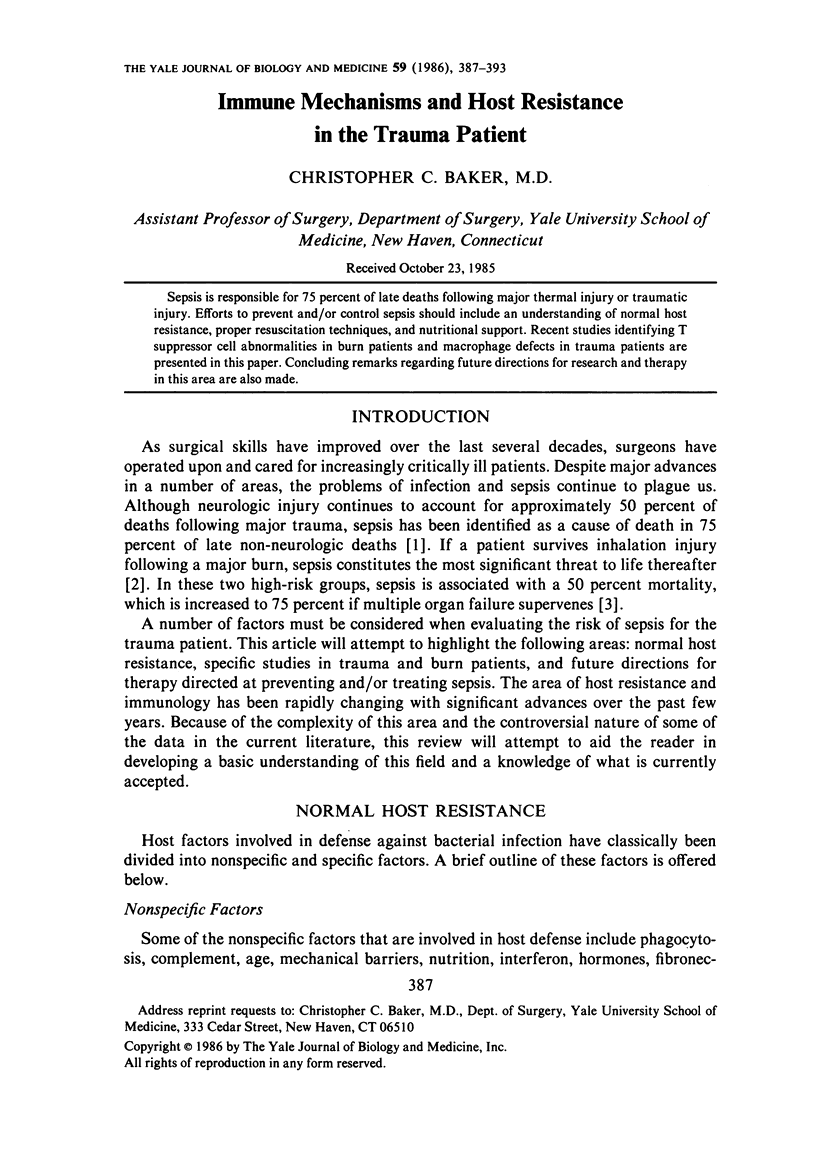
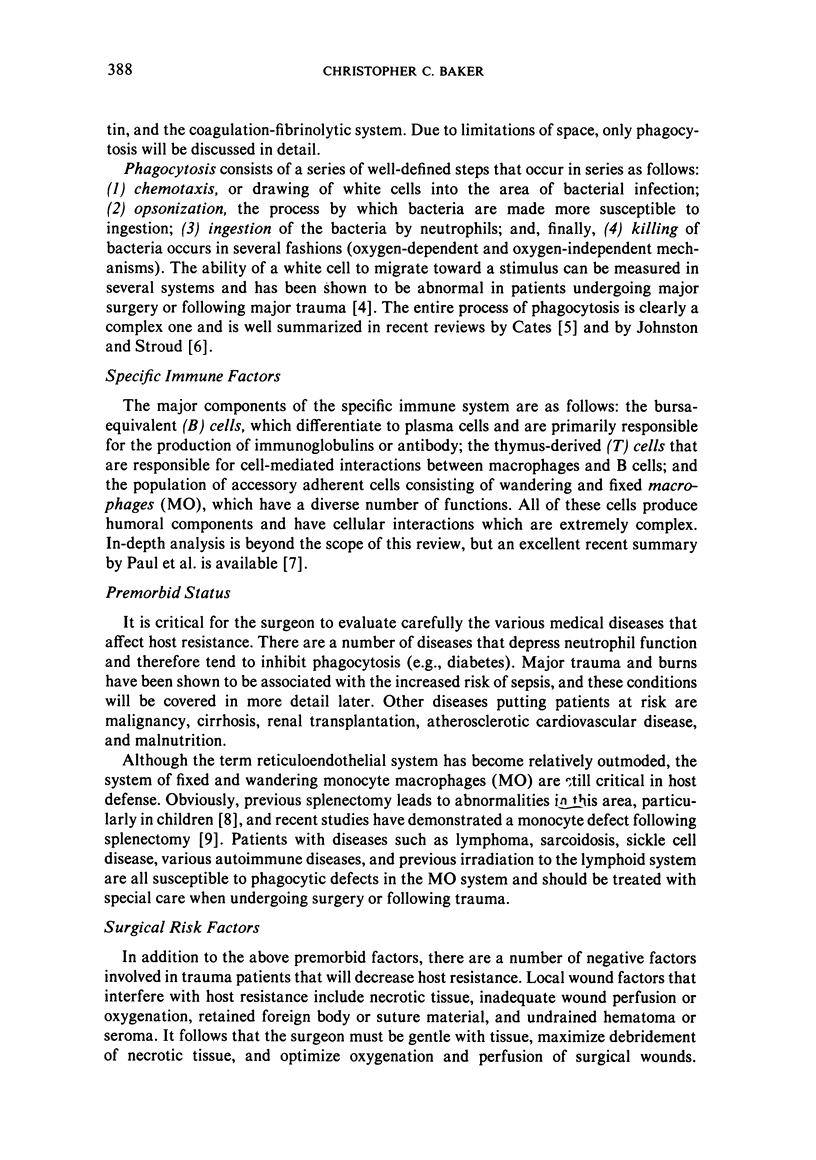
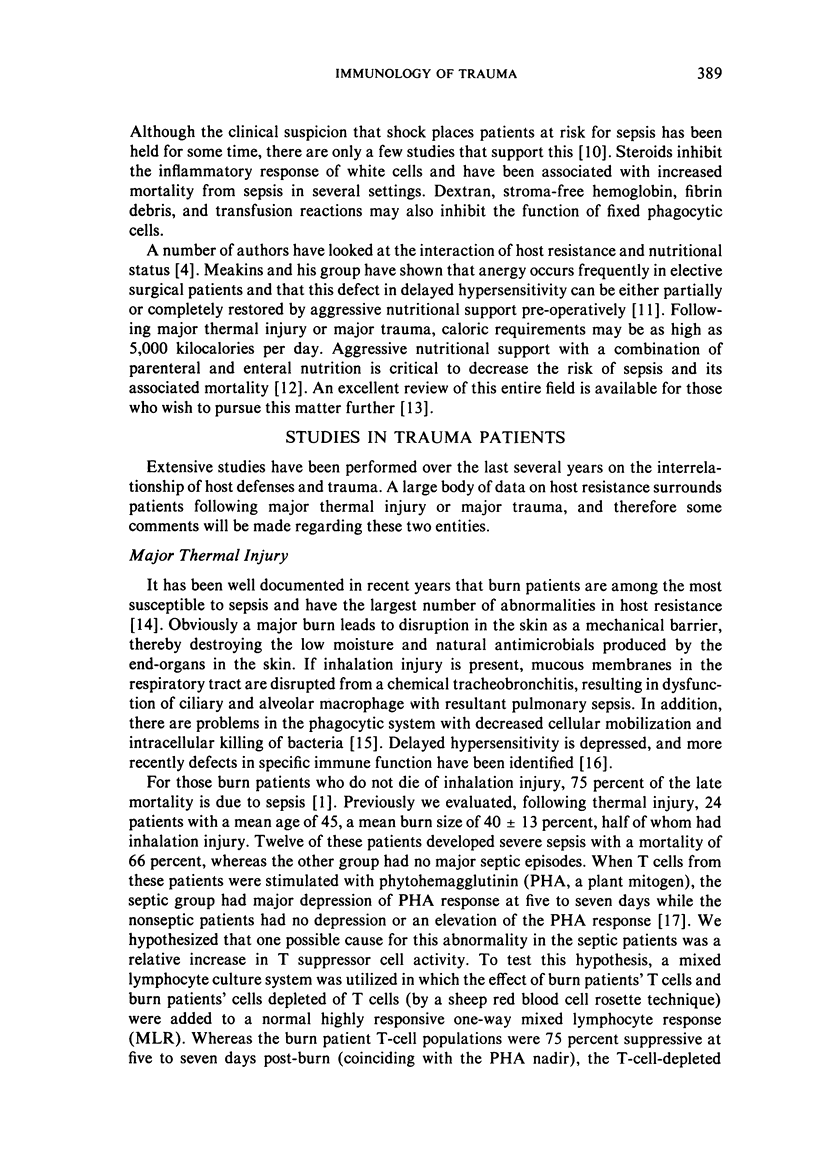
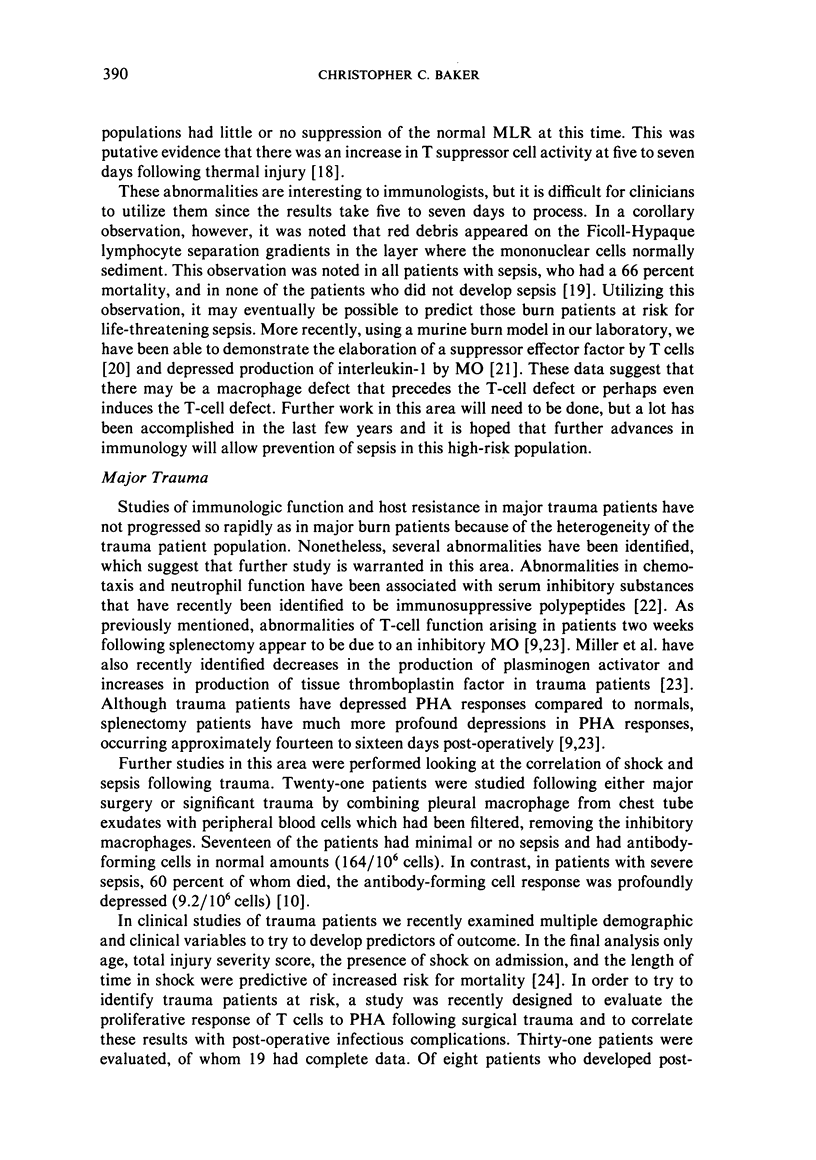
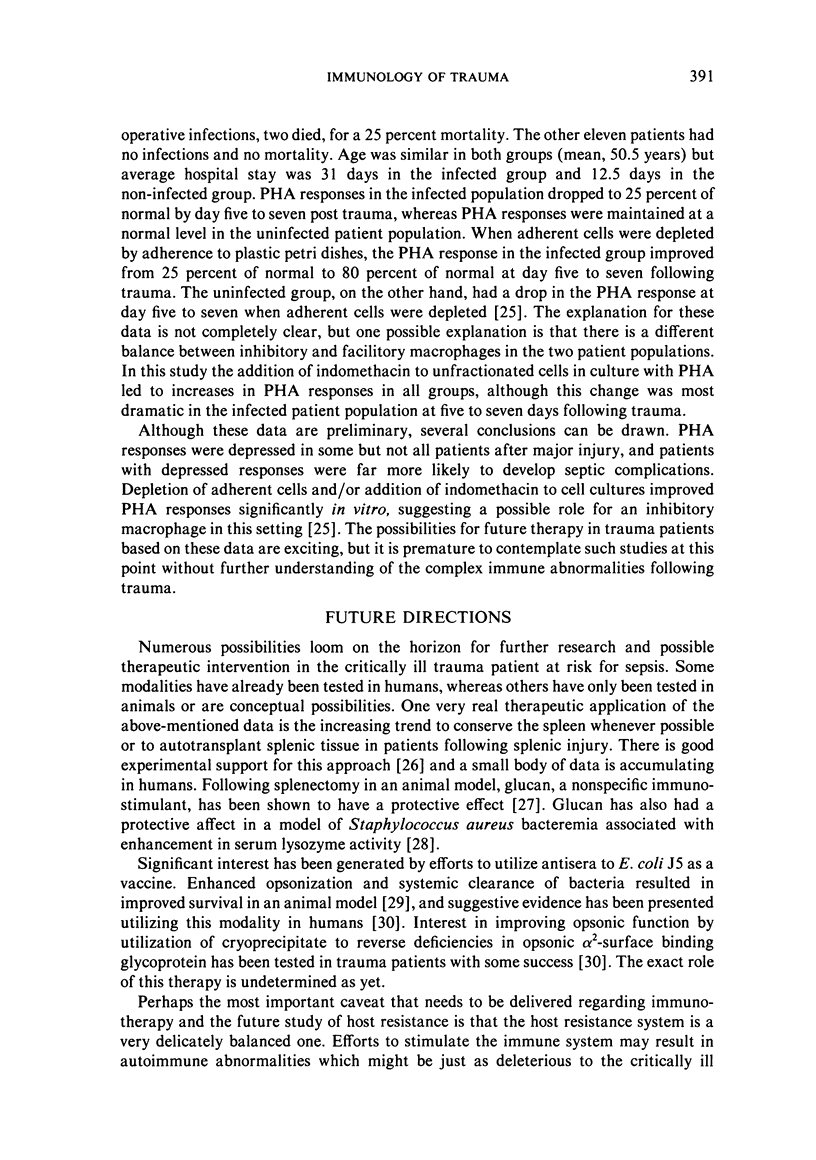
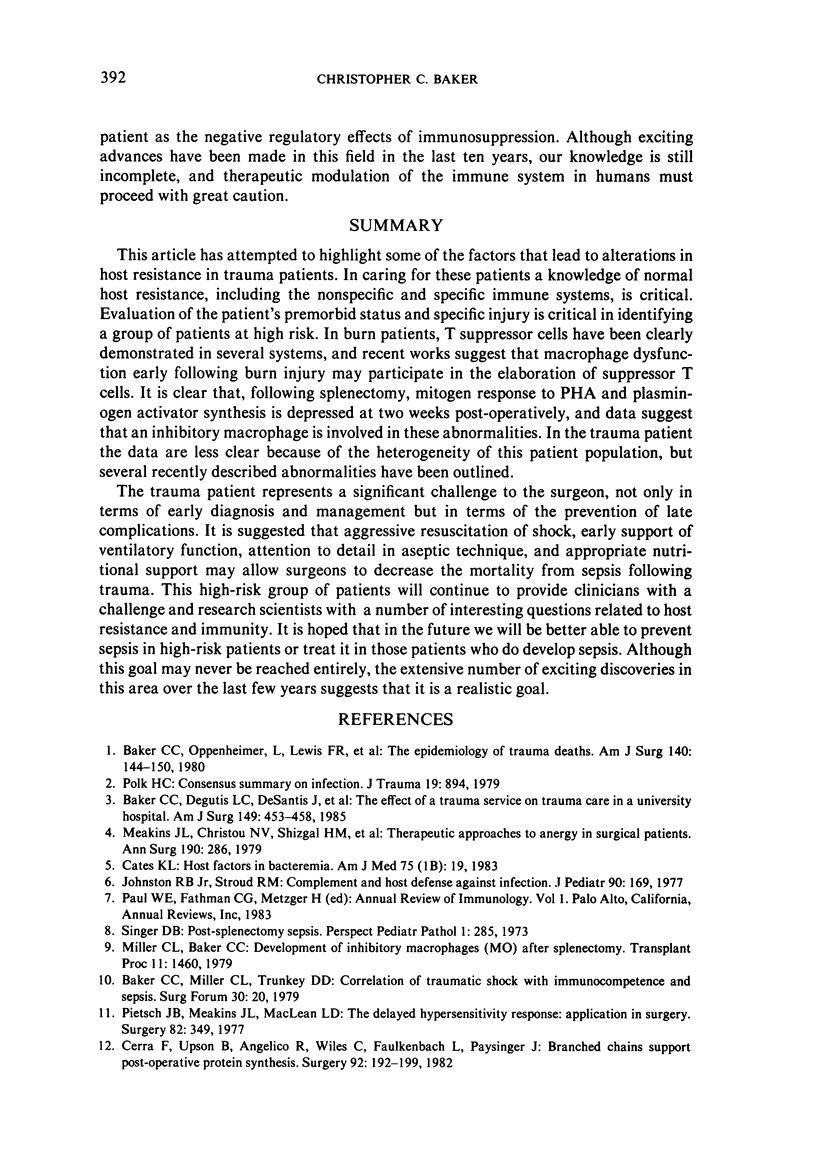
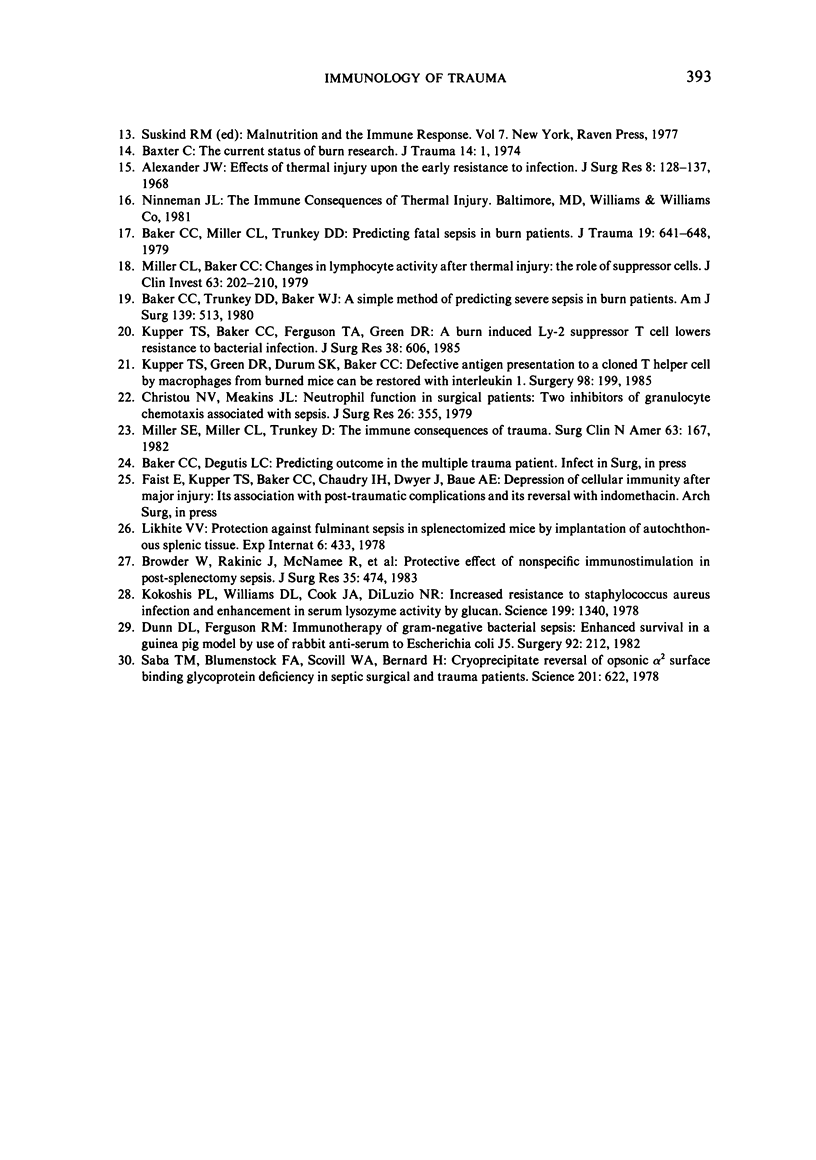
Selected References
These references are in PubMed. This may not be the complete list of references from this article.
- Alexander J. W. Effect of thermal injury upon the early resistance to infection. J Surg Res. 1968 Mar;8(3):128–137. doi: 10.1016/0022-4804(68)90074-7. [DOI] [PubMed] [Google Scholar]
- Baker C. C., Degutis L. C., DeSantis J., Baue A. E. Impact of a trauma service on trauma care in a university hospital. Am J Surg. 1985 Apr;149(4):453–458. doi: 10.1016/s0002-9610(85)80039-8. [DOI] [PubMed] [Google Scholar]
- Baker C. C., Miller C. L., Trunkey D. D. Correlation of traumatic shock with immunocompetence and sepsis. Surg Forum. 1979;30:20–21. [PubMed] [Google Scholar]
- Baker C. C., Miller C. L., Trunkey D. D. Predicting fatal sepsis in burn patients. J Trauma. 1979 Sep;19(9):641–648. doi: 10.1097/00005373-197909000-00001. [DOI] [PubMed] [Google Scholar]
- Baker C. C., Oppenheimer L., Stephens B., Lewis F. R., Trunkey D. D. Epidemiology of trauma deaths. Am J Surg. 1980 Jul;140(1):144–150. doi: 10.1016/0002-9610(80)90431-6. [DOI] [PubMed] [Google Scholar]
- Baker C. C., Trunkey D. D., Baker W. J. A simple method of predicting severe sepsis in burn patients. Am J Surg. 1980 Apr;139(4):513–517. doi: 10.1016/0002-9610(80)90329-3. [DOI] [PubMed] [Google Scholar]
- Baxter C. R. The current status of burn research. J Trauma. 1974 Jan;14(1):1–8. [PubMed] [Google Scholar]
- Browder W., Rakinic J., McNamee R., Jones E., Williams D., Di Luzio N. Protective effect of nonspecific immunostimulation in postsplenectomy sepsis. J Surg Res. 1983 Dec;35(6):474–479. doi: 10.1016/0022-4804(83)90036-7. [DOI] [PubMed] [Google Scholar]
- Cates K. L. Host factors in bacteremia. Am J Med. 1983 Jul 28;75(1B):19–25. doi: 10.1016/0002-9343(83)90068-2. [DOI] [PubMed] [Google Scholar]
- Cerra F. B., Upson D., Angelico R., Wiles C., 3rd, Lyons J., Faulkenbach L., Paysinger J. Branched chains support postoperative protein synthesis. Surgery. 1982 Aug;92(2):192–199. [PubMed] [Google Scholar]
- Christou N. V., Meakins J. L. Neutrophil function in surgical patients: two inhibitors of granulocyte chemotaxis associated with sepsis. J Surg Res. 1979 Apr;26(4):355–364. doi: 10.1016/0022-4804(79)90020-9. [DOI] [PubMed] [Google Scholar]
- Dunn D. L., Ferguson R. M. Immunotherapy of gram-negative bacterial sepsis: enhanced survival in a guinea pig model by use of rabbit antiserum to Escherichia coli J5. Surgery. 1982 Aug;92(2):212–219. [PubMed] [Google Scholar]
- Johnston R. B., Jr, Stroud R. M. Complement and host defense against infection. J Pediatr. 1977 Feb;90(2):169–179. doi: 10.1016/s0022-3476(77)80625-2. [DOI] [PubMed] [Google Scholar]
- Kokoshis P. L., Williams D. L., Cook J. A., Di Luzio N. R. Increased resistance to Staphylococcus aureus infection and enhancement in serum lysozyme activity by glucan. Science. 1978 Mar 24;199(4335):1340–1342. doi: 10.1126/science.628841. [DOI] [PubMed] [Google Scholar]
- Kupper T. S., Baker C. C., Ferguson T. A., Green D. R. A burn induced Ly-2 suppressor T cell lowers resistance to bacterial infection. J Surg Res. 1985 Jun;38(6):606–612. doi: 10.1016/0022-4804(85)90082-4. [DOI] [PubMed] [Google Scholar]
- Kupper T. S., Green D. R., Durum S. K., Baker C. C. Defective antigen presentation to a cloned T helper cell by macrophages from burned mice can be restored with interleukin-1. Surgery. 1985 Aug;98(2):199–206. [PubMed] [Google Scholar]
- Meakins J. L., Christou N. V., Shizgal H. M., MacLean L. D. Therapeutic approaches to anergy in surgical patients. Surgery and levamisole. Ann Surg. 1979 Sep;190(3):286–296. doi: 10.1097/00000658-197909000-00003. [DOI] [PMC free article] [PubMed] [Google Scholar]
- Miller C. L., Baker C. C. Changes in lymphocyte activity after thermal injury. The role of suppressor cells. J Clin Invest. 1979 Feb;63(2):202–210. doi: 10.1172/JCI109290. [DOI] [PMC free article] [PubMed] [Google Scholar]
- Miller C. L., Baker C. C. Development of inhibitory macrophage (phi) after splenectomy. Transplant Proc. 1979 Jun;11(2):1460–1460. [PubMed] [Google Scholar]
- Miller S. E., Miller C. L., Trunkey D. D. The immune consequences of trauma. Surg Clin North Am. 1982 Feb;62(1):167–181. doi: 10.1016/s0039-6109(16)42643-5. [DOI] [PubMed] [Google Scholar]
- Pietsch J. B., Meakins J. L., MacLean L. D. The delayed hypersensitivity response: application in clinical surgery. Surgery. 1977 Sep;82(3):349–355. [PubMed] [Google Scholar]
- Polk H. C. Supportive therapy in burn care. Consensus summary on infection. J Trauma. 1979 Nov;19(11 Suppl):894–896. [PubMed] [Google Scholar]
- Saba T. M., Blumenstock F. A., Scovill W. A., Bernard H. Cryoprecipitate reversal of opsonic alpha2-surface binding glycoprotein deficiency in septic surgical and trauma patients. Science. 1978 Aug 18;201(4356):622–624. doi: 10.1126/science.675246. [DOI] [PubMed] [Google Scholar]
- Singer D. B. Postsplenectomy sepsis. Perspect Pediatr Pathol. 1973;1:285–311. [PubMed] [Google Scholar]


